By Sikla International on Mar 15, 2024 10:00:00 AM
What do we mean by a cross-trade fastening technology?
Cross-trade fastening technology are support structures that are used in construction projects to fasten different trades within one optimized fastening support structure. These fastening solutions act as an interface between the building structure and various trades such as electrical installations, heating and sanitary technology, ventilation systems and many others.
What do Building Information Modeling & cross-trade support structures have to do with each other?
Efficient and future-orientated cross-trade fastening support structures are an important part of the planning and implementation of construction projects. They enable effective collaboration between different trades and help to save time and costs.
Building Information Modeling (BIM), as a collaborative working method, is a decisive factor in the development and implementation of such cross-trade fastening support structures. This method makes it possible to visualise and coordinate all 3D objects and their relevant project data in a 3D environment. The common storage structure of all data enables easier communication, which must be considered a basic prerequisite for efficient collaboration. In addition, BIM also offers numerous advantages in the planning of cross-trade fastening supports, for example by enabling automatic collision detection. Overall, the use of BIM-based fastening support planning can also lead to a more resource-efficient use of materials.
Conventional fastening support planning in the area of fastening technology
The planning of fastening support structures for the individual trades is carried out independently by all companies involved in the construction project. When realizing a heating or technical center, it can therefore happen that three different companies plan and implement fastening support structures for the media lines independently of each other. The result could look like Figure 1.
Figure 1
But is this an efficiant fastening support planning?
Coordinated planning of fastening support structures with the usage of BIM
The first step towards cross-trade fastening technology is to coordinate all involved trades with their pipe routes in advance, to achive a construction of a single fastening support solution. In the following illustration, the fastening support solution for three separate pipe routes from conventional planning could be replaced by a single fastening support structure with initial material savings (see figure 2).
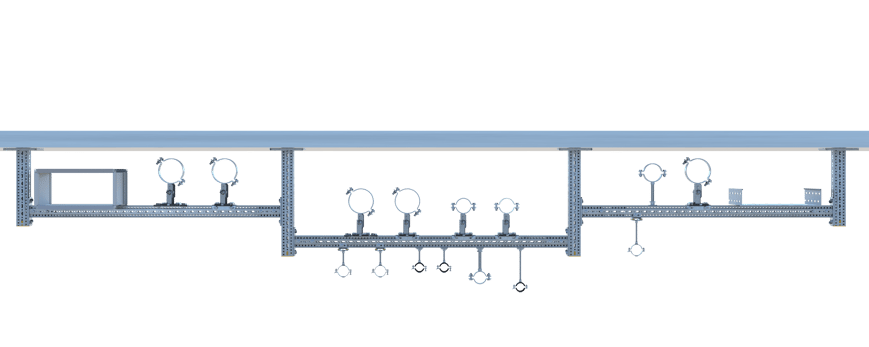
Figure 2
But has this approach really led to the optimum fastening support structure? No, we have not!
Coordinated and optimised planning of cross-trade fastening
support structures with the usage of BIM
If the idea of a cross-trade fastening support solution is taken even further, it becomes clear that there is still considerable potential for optimisation in the coordinated design. Closely coordinated planning between the involved trades for a cross-trade fastening solution based on the 3D technical model and the associated data enables the following fastening solution:
Figure 3: Coordinated and optimised bracket planning
The availability of all information and data makes it possible to realise cross-trade fastening supports and exploit optimisation potential. In the example given, the coordination and optimisation of the fastening support planning leads to significant material savings and cost reductions.
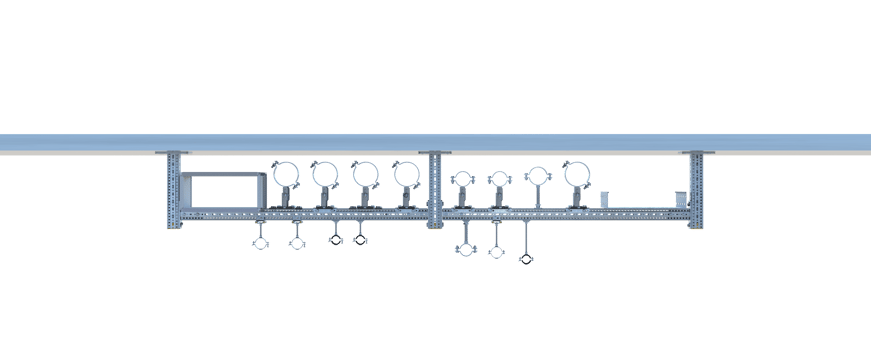
Figure 3
Improved communication and collaboration between the involved trades using BIM
By using a digital platform, all important information can be made accessible to all involved trades at any time. This eliminates time-consuming coordination processes by email or telephone, as everyone can access the current planning status in real time. BIM also offers a better way of visualising the project, which either avoids misunderstandings altogether or at least leads to them being clarified more quickly. The realisation of cross-trade fastening support structures is only possible on the basis of such a data model. This also reduces the risk of component collisions, as these are recognised directly during the planning process.
Sustainability and cross-trade fastening support solution
Sustainable construction is becoming increasingly important in today's world. Sustainability also plays a decisive role when using BIM for cross-trade fastening supports. Precise planning and realisation using BIM allows an optimized use of construction materials. In addition, precise coordination between the various trades means that unnecessary transport routes can be avoided, which helps to save resources as well.
Overview of the advantages of a cross-trade fastening solution:
- Cost efficiency
Precise planning, transparency and close coordination of the cross-trade fasteing supports avoid unnecessary costs.
- Time saving
Reduction in installation work due to optimised fastening support structure.
- Scheduling reliability
Elimination of avoidable delays due to cross-trade fastening support planning.
- Sustainability
Reduced use of materials protects the environment and thus makes an important contribution to the responsible use of resources.
Conclusion
Isn't it amazing what advantages can be achieved with the Building Information Modeling working method?
The comprehensive 3D data model with all its information provides a perfect basis for a joint and harmonised approach in all areas of a construction project. Sikla's contribution is in the area of cross-trade fastening solutions, which were discussed in detail in this article.
In addition to the advantages outlined in the form of cost savings, scheduling reliability, etc., there is another important point - collaborative working. Despite the flood of data, close coordination between the trades leads to more intensive cooperation, so that the human factor remains at the centre of attention.
We therefore have the best prerequisites for realizing projects according the motto #togetherwebuild #siklasicher.
If you have any questions, please do not hesitate to contact us.

Written by Sikla International
Sikla is one of the leading European manufacturers and suppliers of support systems for Mechanical & Electrical (M&E) services and plant construction. Our products are being used in over 40 countries all around the world. We are represented in most European countries through Sikla sister companies or selected distributors. Sikla was founded in 1967 by Sighart Klauß. Today the internationally operative group of companies employs a staff of around 600 and is operated as an independent family-owned company by Dieter and Reiner Klauß.
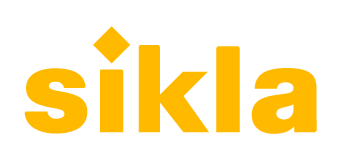
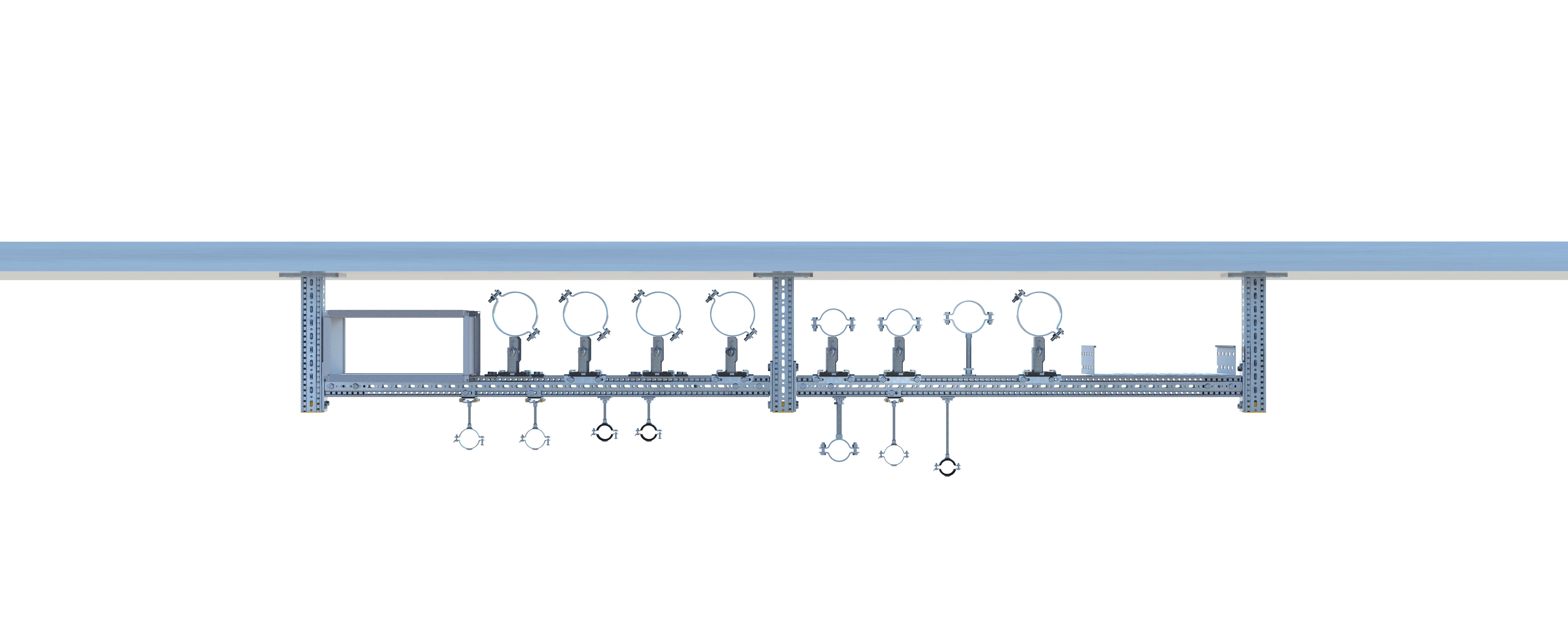
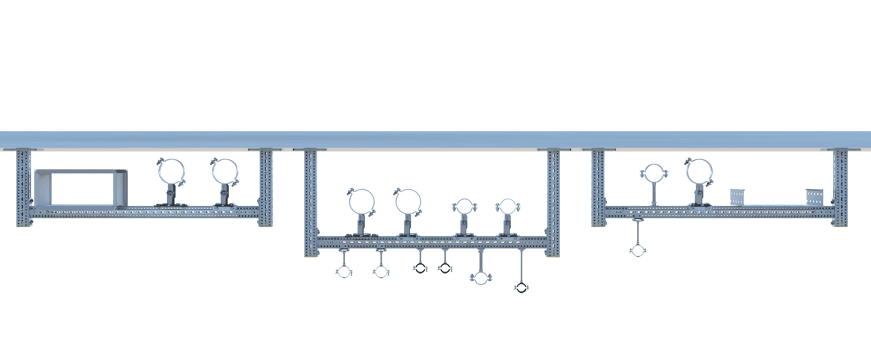

comments